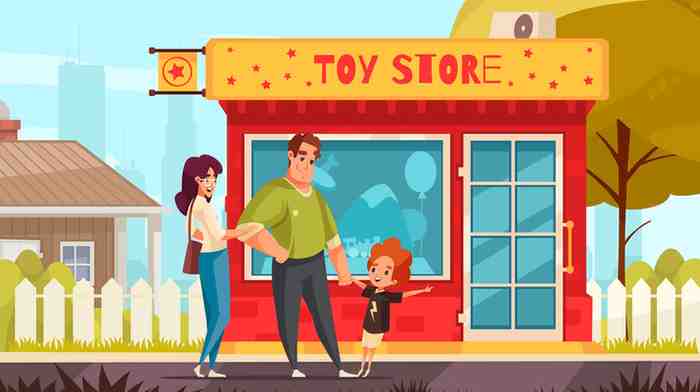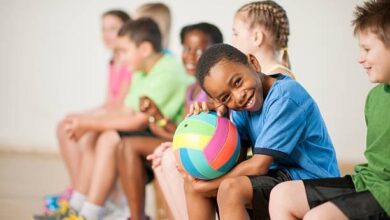From Passion to Profit: The Real Benefits of a Kids Store

Starting a kids store isn’t just about lining shelves with cute onesies or stacking bins of toys. It’s about stepping into a space that’s not only growing fast but also filled with meaning. Parents don’t stop shopping for their kids, even when money’s tight. That’s not just a guess—it’s a fact backed by real numbers. The children’s apparel market is set to hit $339.1 billion by 2026, and the toy industry? It held strong even when other markets dipped.
You can’t just throw a bunch of products online and expect magic. The stores that win are the ones that come from passion.That kind of heart shows. In how you pick your products. How you talk to your customers. How your store feels. And people notice. They come back not just for the stuff, but because they like you and what you stand for.
If you’re thinking of jumping in, don’t wait for perfect. Start small. Pick a niche. Focus on what you love and what parents actually need. Build something honest and simple—and grow it with care.
The opportunity is real. The market is ready. And the families out there? They’re looking for brands that feel personal, thoughtful, and trustworthy. That could absolutely be you.
Why a Kids Store? A Market That Keeps Growing
The demand for quality children’s products is constant. Parents, grandparents, and caregivers are consistently spending on clothing, toys, books, learning tools, and room decor. Birthdays, baby showers, holidays, and back-to-school seasons all offer reasons to shop.
Key Statistics
- By 2025, the global market for infant and children’s products is predicted to reach a value of about $16.78 billion.
- Millennial and Gen Z parents value design, quality, and values-aligned shopping (eco-friendly, local, handmade).
- In the U.S. More than $38 billion was spent on toys alone in 2023.
These trends confirm what many store owners already know: selling to families isn’t just heartwarming, it’s smart business. The business insights shopnaclo leverages—such as capitalizing on high-demand, recurring-purchase items—are easily adoptable for any small business.
Types of Kids Toy Shops You Can Start
1. Educational Toy Stores
These shops focus on learning through play. Think of toys that promote reading, math, problem-solving, and creativity.Science kits, puzzles, building blocks, flashcards, storybooks, and geography games are a few examples, although they do not include mechanical or robotic equipment.
What to Do
- Categorize by learning outcomes: literacy, math, creativity.
- Work with teachers or homeschoolers to understand what’s popular.
- You should have toys for kids of all ages, from toddlers to teens.
- Offer bundles around school years or skills (Kindergarten Readiness Kit).
What Not to Do
- Don’t just stock what you think is educational. Vet with educators or parents.
- Don’t overstock the shelves with identical products; instead, pick a select handful that are truly unique.
- Don’t ignore packaging clarity. Parents need to quickly see benefits (e.g., Improves vocabulary or Builds fine motor skills).
2. Eco-Friendly & Handmade Toy Stores
This model taps into the growing demand for sustainability and ethical consumption. Handmade dolls, wooden trains, recycled-material art kits, natural-dye plushies—all of these fit here.
What to Do:
- Be transparent. Indicate the creator tales, materials utilized, and sources in clear terms.
- Add artisan tags or eco-labels (Fair Trade, FSC-certified wood, organic cotton).
- Offer customization or gift options like Build Your Own Play Set.
What Not to Do
- Don’t greenwash. If it’s not truly eco, don’t pretend it is.
- Avoid mass-produced lookalikes. Your edge is authenticity and story.
- Don’t price without context.
3. Franchise & Brand Name Toy Stores
You’re retailing recognizable toys from big brands—LEGO, Mattel, Hasbro, Disney, etc. These stores thrive on customer trust and foot traffic looking for specific toys.
What to Do
- Get licensed agreements and follow brand merchandising rules.
- Run theme-based promotions: Barbie Back-to-School, LEGO City Days.
- Train staff to know product lines and release dates (parents will ask).
What Not to Do
- Don’t expect brand names to sell everything. Location, layout, and service still matter.
- Avoid overstocking one trend. When hype fades, you’re left with dead inventory.
- Don’t ignore indie products—mix in some lesser-known lines to balance margins.
4. Online Specialty Toy Stores
These are eCommerce-first shops built around a niche. Maybe you only sell plushies, Montessori toys, puzzles, or toys made in your region. These stores thrive with focus.
What to Do
Build a clean, easy-to-shop site (Shopify is solid for this).
- Use crisp, high-quality product photographs, and make your brand’s color scheme warm and inviting.
- Expand your product line by adding items that your clients request after starting with a small, niche selection.
What Not to Do
- Don’t start too broad. Toys for everyone is a fast way to get lost.
- Avoid cluttered product pages—limit options per page to reduce overwhelm.
- Don’t neglect SEO or organic social media. Instagram, Pinterest, and TikTok drive traffic here.
5. Pop-Up & Local Market Toy Stores
These stores don’t need a full-time retail space. You show up where the parents are—weekend markets, school fairs, craft expos, or seasonal kiosks.
What to Do
- Offer seasonal collections (e.g., summer beach toys, holiday gifting sets).
- Focus on tactile and eye-catching products that draw kids in immediately.
- Use signage to show what’s unique or handmade.
What Not to Do
- Don’t go unprepared. Business insurance, the appropriate licenses, and a ready-made backup payment method are all necessary.
- Avoid bringing large inventory—space is limited, and setup time matters.
- Don’t skip branding just because it’s a market. Your booth still needs to feel like a real store.
6. Therapy Toy Stores
These stores sell toys that help kids grow and learn during therapy. The focus is on helping with things like speech, movement, focus, and emotions. You’ll find items like sensory balls, fidget toys, chewable necklaces, therapy putty, social stories, and balance boards. These are not machines or robots—they’re hands-on tools kids can use during play or therapy.
What to Do
Sort toys by skill or goal
Make it easy for people to find what they need. For example:
- Speech and Language toys
- Movement and Balance toys
- Calming and Focus tools
- Emotional learning sets
Talk to therapists
Ask speech therapists, occupational therapists, ABA therapists and behavior therapists what toys they recommend. They know what actually works.
Have toys for all ages and needs
You’ll need simple toys for toddlers and more advanced tools for older kids or teens. Some may be non-verbal, others may need help focusing.
Make ready-to-use kits
Put together kits based on what kids might need. For example:
- Calm Down Kit
- Speech Starter Pack
- Fine Motor Practice Set
Help parents understand how to use each toy Use simple signs or labels that show what the toy helps with. A small card or video showing how to use the toy can go a long way.
What Not to Do
- Don’t pick toys just because they look helpful: Ask real therapists or parents before adding new items. Not everything labeled therapy toy is useful.
- Don’t stock too many of the same thing: You don’t need ten versions of the same fidget or chew toy. Pick the best few that cover different needs.
- Don’t forget to explain the benefit clearly: Parents should be able to look at the package or shelf tag and quickly understand what it helps with—like Helps with hand strength or Good for calming down.
Toys like robot kits and logic sets support learning, while therapy tools like fidgets and chewables help with focus and regulation. But if you provide ABA billing services or therapy, selling those tools alongside billed care can trigger concerns about self-dealing or kickbacks. To avoid audits and legal issues, keep product sales and ABA billing services clearly separate.
Turning Passion Into Purpose: Building a Kids Store That Feels Right
Passion Is Your Edge
Most kids shop owners didn’t sit down with a polished business plan or investor pitch. They started because something was missing. Maybe they were a parent tired of overpriced, scratchy baby clothes and thought, Why isn’t anyone making soft, organic stuff that doesn’t cost a fortune? So they made it themselves. Or maybe they were naturally creative—good with their hands, designing cute toys or nursery art—and friends kept saying, You should sell this!
That spark usually comes from a personal need, not a business strategy. And that’s actually what makes these shops special. They’re built on real experiences, real frustration, real love. That kind of origin story connects with customers. It’s relatable. It’s genuine. In a world when most things are manufactured in large quantities, being sincere and real creates a significant impact and sticks in people’s memories.
Why this works
Kids products are emotional purchases. Parents don’t just want things—they want meaning, trust, and care behind those things. When your store comes from a personal place, your brand feels more authentic. That gives you an edge over mass-market retailers.
Your Story = Your Marketing Superpower
Genuine experiences give rise to genuine beliefs. People want to support brands they feel connected to. They like knowing the human behind the brand—especially when it involves children.
- This isn’t just fluff. It impacts behavior:
- Browsers become buyers.
- Buyers become repeat customers.
- Satisfied customers recommend your store to others and return.
Repeat Business With Loyal Customers
Unlike one-time purchases, kids grow. That means your customers come back – often. First it’s newborn essentials, then toddler toys, then school backpacks and room décor.
Strategies to build loyalty
- Make age-based sets, such as school-ready sets or starting kits for young children.
- Use rewards programs or referral bonuses
- Send email reminders for milestones (e.g., Need 2T clothing? We’ve got you.)
Compared to first-time consumers, returning customers spend nearly twice as much. Kids stores are naturally positioned to benefit from this because of the lifecycle of childhood needs. Business insights shopnaclo applied include segmenting email campaigns by age brackets, which increased return visits without heavy advertising.
Flexible Store Models That Work Around Your Life
Whether you’re a parent, creative entrepreneur, or side hustler, kids stores can be tailored to fit your schedule and energy.
Options include
- Shopify-based online store with dropshipping
- Etsy store focused on handmade or customized goods
- Local boutique with a curated in-person experience
- Pop-up shops or seasonal stalls at local markets
Personal Fulfillment
Let’s be honest—not all businesses feel good. But selling products that bring smiles to kids and ease to parents? That’s fulfilling.
Whether it’s wrapping up a baby gift for a first-time aunt or helping a parent find the perfect learning toy, there’s joy in knowing your work matters.
Community Connection and Word of Mouth
When you run a kids store, you’re not just selling products. You’re becoming part of families’ lives. That makes it easier to build a loyal, engaged community around your shop.
Tactics to build community
- Host story times or parent meetups if you’re local
- Collaborate with schools or daycares
- Partner with parenting bloggers or micro-influencers
Resilience in Any Economy
Let’s call it what it is—parents don’t stop spending on their kids store. Even when the economy’s shaky, they’ll cut back on extras for themselves before they skip a bedtime storybook, a fresh pack of onesies, or a birthday gift that makes their child light up.
Back in 2020, when everything else slowed down, U.S. toy sales actually jumped 16%. Why? Because parents were home with their kids, trying to keep them happy, calm, and entertained. Toys weren’t just toys—they were lifesavers.
That’s why stocking both essentials (like bibs, books, and basics) and feel-good buys (like stuffed animals and dress-up outfits) is a smart move. Essentials keep the cash flow steady. Meaningful items bring people together, forge ties, and make memories.
At the end of the day, if your store can meet both needs—the practical and the emotional—you’re not just recession-proof. You’re the shop parents come back to, again and again, no matter what’s happening in the world.
Practical Strategies to Grow Your Kids Store
- Know Your Niche Don’t try to sell everything. Instead, focus on what you care about—and what your audience needs. Maybe it’s:
- Montessori learning tools
- Inclusive kids store
- Personalized birthday boxes
- Learn to use Instagram, Pinterest, and TikTok effectively; these platforms are ideal for showcasing children’s brands.
- Invest in Branding Clean design, warm photography, and kid-friendly colors matter. Your branding should feel trustworthy, playful, and professional.
- Use Tools to Stay Lean Inventory management apps, print-on-demand services, and customer service tools can keep your overhead low.
- Listen to Feedback Parents are vocal—use that to your advantage. Review every comment, DM, and email.
These are all business insights shopnaclo refined over time. Their data-driven decisions, from design colors to pricing strategies, are all rooted in listening and adjusting.
Final Thoughts: It’s More Than a Store
There is more to starting a children’s store than merely making money. It’s a lifestyle shift that can bring freedom, purpose, and profit—without burning you out.
When done right, you’re not just selling things. You’re becoming a small but important part of someone’s childhood. That’s meaningful.
And with smart tools, niche focus, and consistent branding, your passion-driven kids store can absolutely turn into a sustainable, long-term business.
Whether you’re just starting out or looking to grow what you’ve already built, keep the focus clear: serve families well, stay connected to your why, and build with care.
Starting small doesn’t mean thinking small. With the right approach and application of real-world business insights shopnaclo stands behind, your kids store can deliver something few other businesses can: connection, joy, and lasting value.

